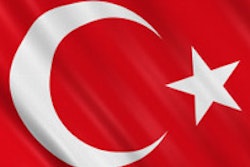
Digital technologies have affected radiology more than any other branch of medicine. Radiologists no longer need to be in the same geographical area, or even the same country, as patients to be able to care for them.
Teleradiology largely evolved in order to support the spiraling need for complex, emergency radiology, particularly CT examinations performed at nighttime in the developed world. The demand for emergency radiological reporting outstripped the ability of existing "local" radiology teams and services to deliver this.
 Dr. Neelam Dugar is a consultant radiologist at Doncaster Royal Infirmary, U.K., and former chair of the Royal College of Radiologists' Imaging Informatics Group.
Dr. Neelam Dugar is a consultant radiologist at Doncaster Royal Infirmary, U.K., and former chair of the Royal College of Radiologists' Imaging Informatics Group.
Teleradiology brings about benefits, especially in the delivery of emergency radiology on-call cover for a large geographical area. It has also provided interim support for services that are unable to recruit into their radiology team. However, there is also a flip side to radiologists who may move to a profession of being an "office-based teleradiologist" who is far removed from any front-line patient contact. These teleradiologists may work in private offices, with no direct contact or dialogue with front-line doctors who are directly involved in patient care.
Easy digital access to a patient's electronically stored records, as well as the face-to-face dialogue with front-line doctors, has created proactive, patient-involved, clinical radiologists. In the U.K., for instance, this phenomenon started with the treatment of cancer patients. The transformation began to occur with multidisciplinary team meetings (MDTMs) for cancer care, and it has changed the practice of radiologists. Radiologists have come out of their darkrooms to work on the front line, making decisions on patient management at these meetings.
The common format of a MDTM is to have a clinical presentation from a physician or surgeon who has had direct contact with the patient. After that, radiologists describe the findings on imaging, and pathologists present relevant cytology and histology. Oncologists and surgeons/physicians then agree on further management decisions, and radiologists suggest further investigations such as staging investigations.
These meetings help to define and support proper investigative pathways for a complex disease process, whether malignant or benign conditions. These meetings not only influence the particular cancer patients discussed, but they also have a huge impact on the overall quality of a radiology reporting service. Most U.K. National Health Service (NHS) hospitals have MDTMs by anatomical specialty for cancer: lung, gynecology, gastrointestinal tract, breast, lymphoma, genitourinary, neurology, head and neck, etc. MDTMs have also evolved for noncancer specialties as well: vascular, trauma and orthopedics, ear/nose/throat, rheumatology, and pediatrics.
The term "clinical radiologist with special interest" has evolved from participation in multidisciplinary team meetings. They are acutely aware of common presentations of diseases in MDTMs in which they participate. They gain significant experience in their particular field. They are aware of how patients are managed and the proper investigations needed for these patients. They get feedback on their reporting.
With this feedback, they are in a constant learning environment improving their reporting skills. Hence, when they are involved in reporting examinations in their particular subspecialty, the clinical specialist provides a very high-quality report. Working in clinical teams is essential when evaluating a radiology reporting service provider.
Radiology teams
The practice of modern-day medicine is highly specialized. It requires radiologists to work in radiology teams to support high-quality patient care. A team of radiologists now manage their workload to allow for reporting of referrals made from medical or surgical specialists to be reported by relevant "special interest radiologists" -- who work in specialty-based clinical teams as described above. Referrals by nonspecialist physicians, such as general practitioners, accident and emergency specialists, and trauma surgeons, should be distributed to all members of the radiology team.
General radiology experience is important for delivering emergency services and night cover. However, team members would cross-refer and seek advice and opinions from others within the radiology team, as and when required to ensure that the quality delivered to the patient is always optimum. Radiology team work is essential when evaluating a radiology reporting service.
One-click access to blood and pathology reports
Clinical radiologists who participate in MDTMs recognize the importance of blood tests, microscopy, and cytology/histology and the impact of these in improving diagnostic acumen. Large, irrelevant differential diagnoses can be confusing for the referring doctor and detrimental to patients. For radiologists to make good, accurate, tentative, and differential diagnoses, they must have access to recent investigation results with one mouse click on the computer. Without quick access to supporting information, radiologists are more likely to be noncommittal and provide an ambiguous report with a large number of irrelevant differential diagnoses. Poor-quality radiology reports can delay patient management and lead to unnecessary tests.
Professional two-way dialogue
Modern medicine is very fragmented due to high specialization. Clinical subspecialization itself improves delivery of quality of medical services. However, care fragmentation is an inevitable side effect of subspecialization. Good communication among professionals is critical to high-quality integrated care to the patient as an individual. This is fairly evident in the success of MDTMs in improving the quality of cancer care in the U.K.
Many of today's physicians have the option of communicating with their colleagues through face-to-face discussions, by telephone, email, texting, or videoconferencing (whether via smartphone or computer). These forms of communication are two-way dialogues. However, we also have the traditional written paper-based communication, which does not support the natural two-way dialogue. The latter epitomizes the "radiology report." Face-to-face communication is the best form of communication, because it allows for facial and verbal emotions and emphasis, but written communication is important to ensure that the long-term record is maintained.
When we analyze the majority of radiology reporting, we find that it falls into the worst form of written communication, because it does not encourage a natural two-way dialogue. This often results in misunderstanding of the written report by its recipient and causes a delay, and has a potentially detriment effect on patient management. Hence, it is vital that radiologists and referrers are not limited to a one-way written communication. Radiologists need to verbally communicate with their clinical colleagues. Written communication aided by regular face-to-face communication must emerge as the gold standard for radiology reporting services.
Patients need to be aware of the important role of the doctor who works behind the scenes and reports on their images -- the radiologist. As customers, "patients" are in the driving seat for demanding quality. They are the ones who are directly affected by radiology report quality and benefit from the quality.
When evaluating a radiology reporting service, here are some of the questions patients should ask:
- Will my images be reported by a "clinical radiologist" or a "remote office-based teleradiologist"?
- Does the radiology team have a radiologist with front-line clinical expertise in my disease process -- i.e., are they part of a "clinical team"?
- Does the reporting radiologist have access to my blood results, pathology reports, and clinical correspondence to enable him/her to provide a high-quality report?
- Will my doctor (whom I am seeing) be able to have a face-to-face dialogue with the reporting radiologist if he/she needs to?
- Will my doctor be able to have a verbal dialogue with the radiologist?
- Will I get a copy of my radiology report?
As with all walks of life, changes and quality can be driven by customers -- radiology reporting services are no different.
Dr. Neelam Dugar is consultant radiologist at Doncaster Royal Infirmary, U.K., and former chair of the Royal College of Radiologists' Imaging Informatics Group.
The comments and observations expressed herein do not necessarily reflect the opinions of AuntMinnieEurope.com, nor should they be construed as an endorsement or admonishment of any particular vendor, analyst, industry consultant, or consulting group.

















